Top courses
KSh30000KSh25000

Beginner
Updated 2024 Graphic Design Masterclass: Become a Graphic Design Pro
(0)
(0 Reviews)

00:00:00 Hours
46 Lectures
Last updated Wed, 22-May-2024
46 Lessons
00:00:00 Hours
English
Learn Photoshop, Illustrator, InDesign, Design Theory, Branding, and Logo Design all in this Ultimate Graphic Design Course.
- Learn and apply graphic design principles to produce effective designs in Photoshop, Illustrator, and InDesign.
- Learn and apply color theory and practices to produce effective designs in Photoshop, Illustrator, and InDesign.
- Design an online ad, design an infographic with effective color, create a gig poster with type as a design component, create an illustrative postcard.
- Learn and apply effective typography to produce effective designs in Photoshop, Illustrator, and InDesign.
KSh13000

Advanced
Search Engine Optimization Training Course (SEO)
(0)
(0 Reviews)

00:00:00 Hours
19 Lectures
Last updated Mon, 27-May-2024
19 Lessons
00:00:00 Hours
English
How would you like to get an abundance of organic traffic directly to your website? In this SEO masterclass, you will learn exactly how to optimize your website so you can show up on Google
- One will be able to present an appreciation of emerging best practices in SEO
- Build your website SEO Plan
- Track your progress with the SEO and keep your website optimized
KSh8500KSh5000

Beginner
Social Media Training 2024 for Beginners/Professionals
(0)
(0 Reviews)

00:00:00 Hours
33 Lectures
Last updated Thu, 23-May-2024
33 Lessons
00:00:00 Hours
English
Learn the right way to do Social Media Marketing from the experts. Gain step-by-step instructions in marketing on Facebook, Twitter, YouTube, Instagram, LinkedIn and Pinterest. This over-the-shoulder training by our experts will walk you through these complicated processes. Seeing the expert doing these processes step-by-step will make this complicated process so much easier for you. Most training only gives you theories, we give you real-world practical application.
- a) Describe how to create a sales funnel that captures emails and makes sales
- b) Discuss how the marketing pros do a/b split testing to multiply their profits!
- c) Recall the right way to do social media marketing
- d) Explain how to market effectively on Facebook, YouTube, Pinterest, LinkedIn, Twitter & Instagram
- e) Explain how to create a LinkedIn Business page and create your own LinkedIn groups
- f) Discuss how to build an amazing income generating funnel that sells!
- g) Recall the step-by-step onscreen training process you saw for setting up these marketing processes
- f) Analyze how to get the best results from your social media marketing
KSh30000KSh26000

Beginner
Youtube Marketing Masterclass Training Course
(0)
(0 Reviews)

00:00:00 Hours
4 Lectures
Last updated Mon, 06-Feb-2023
4 Lessons
00:00:00 Hours
English
Complete guide to starting a YouTube channel, getting more views & subscribers, and building a brand with videos.
- Create your own successful YouTube channel
- Grow your brand with a YouTube channel
- Get more YouTube views
- Get more YouTube subscribers
- Make high-quality videos on a budget
- Post and optimize videos with great titles, descriptions, and tags
- Create clickable thumbnails that get more views Make money with a YouTube channel
KSh30000KSh26000

Beginner
Marketing Strategy: Business Fundamentals
(0)
(0 Reviews)

00:00:00 Hours
34 Lectures
Last updated Mon, 06-Feb-2023
34 Lessons
00:00:00 Hours
English
Marketing Strategy Fundamentals: The Art Of Selling Your Products Through Superb Marketing Efforts
- Why we need Marketing
- How to build a Marketing plan
- Perform marketing research
- Set up the 4Ps of Marketing
- Organize marketing campaigns
- Why a career in Marketing can be really interesting
- Understand customers and their needs, wants, and demands
- Carry out customer segmentation
- Leverage product mix and pricing strategies
- Calculate Customer Lifetime Value
KSh22500

Beginner
Google Ads Training Course
(0)
(0 Reviews)

00:00:00 Hours
7 Lectures
Last updated Thu, 19-Jan-2023
7 Lessons
00:00:00 Hours
English
Learn how to use Google Ads to consistently drive quality traffic to websites in this Google ads course.
This certification course teaches you how to employ Google Ads to grow your business by attracting consistent and profitable web traffic around the clock.
- a) Discuss how to create, develop and optimize profitable Google Ads campaigns
- b) Explain how to attract consistent web traffic
- c) Explain how billing works in Google Ads
- d) Structure your Ad Groups like a professional
- e) Set up languages, daily budget, hourly reports and other features on the platform
- f) Break down how to remarket your previ
KSh10000KSh8500

Beginner
Google Analytics Course & Certification 2024
(0)
(0 Reviews)

00:00:00 Hours
35 Lectures
Last updated Wed, 22-May-2024
35 Lessons
00:00:00 Hours
English
you'll learn how to use Google Analytics 4 as an analytics service to measure traffic and engagement on your websites.
- 1. Explain the purpose of Google Adwords and how it can be used together with Google Analytics
- Summarise different types of reports we can use in Google Analytics
- Describe what Tag Manager is and why we use it with Google Analytics
- Summarise the difference between Google Analytics 3 and Google Analytics 4
- Outline the functions of Google BigQuery and what role it plays in Google Analytics
- Outline differences in the admin panel between UA and GA
KSh40000

Intermediate
The Ultimate 2024 Digital Marketing Lead Generation Masterclass - How to Generate and Convert Leads
(0)
(0 Reviews)

00:00:00 Hours
78 Lectures
Last updated Wed, 22-May-2024
78 Lessons
00:00:00 Hours
English
Learn how to generate and convert leads, market research, copywriting, SEO, Google ads, Facebook ads, email marketing, Twitter ads + more
- 1. Get Hired as a Digital Marketing Expert
- 2. Work From Home as a Freelance Marketer
- 3. Make Money as an Affiliate Marketer
- 4. Grow a Business Online From Scratch
- 5. Explain the useful tools that allow you to connect with your audience
- 6. Describe how to set up landing pages to build an email list
- 7. Analyze the delivery of different content types to potential clients at different stages of the marketing cycle
KSh18000KSh16000

Advanced
Facebook Advertising and Marketing Course 2024
(0)
(0 Reviews)

00:00:00 Hours
77 Lectures
Last updated Wed, 22-May-2024
77 Lessons
00:00:00 Hours
English
Learn How To Plan An Effective Facebook Advertising Campaign With Our Course Facebook Ads & Marketing Ideal for Marketers Or Business Owners Looking to become Facebook Expert To Run Their Own Business Campaigns
- Introduction - connecting with new Audience
- Master Facebook Ads Manager
- Social Media Presence
- Advance Features in facebook Business Manager
- Posts on Various Social Media Network
- Facebook Marketing- All in One Course
KSh10000KSh8500

Beginner
Mobile Messaging - Bulk SMS, Short code, USSD, RBT, IVR & WhatsApp Marketing Training Course
(0)
(0 Reviews)

00:00:00 Hours
18 Lectures
Last updated Fri, 27-Jan-2023
18 Lessons
00:00:00 Hours
English
Engage users across touchpoints and lifecycle stages with omnichannel campaigns. Send contextual, real-time, and personalized push messages by taking this customized course.
- Role of Bulk SMS
- How to get Started Mobile Marketing
KSh15000KSh10000

Beginner
Report Writing Skills Course
(0)
(0 Reviews)

00:00:00 Hours
21 Lectures
Last updated Thu, 19-Jan-2023
21 Lessons
00:00:00 Hours
English
Good ideas do not always get the attention that they deserve. Frequently, badly organized, wordy reports tend to hide important information, and the important messages are lost. But how?
- To use a number of easy-to-learn report-writing techniques
- To ensure the reports are well structured, that they flow logically and look professional
- To make the reports easier to read, and therefore to understand
- To make essential parts of the report stand out
- Make it easy for different readers to navigate around the report
- To produce documents that enhance the image of both the writer and the organization
KSh15000KSh12000

Beginner
Effective Communication Skills Training Course
(0)
(0 Reviews)

00:00:00 Hours
8 Lectures
Last updated Mon, 06-Feb-2023
8 Lessons
00:00:00 Hours
English
This OraDMT Effective Communication Skills Course aims to help each participant build on their communication strengths and learn new and interesting techniques to add to their skillset.
- You will learn the elements of communication and be able to flex each one to meet your objectives.
- By ensuring the application of all the aspects integral to effective communication, you will always stand in line for success.
KSh15000KSh12500

Beginner
Content Monetization Training | Blogging | YouTube
(0)
(0 Reviews)

00:00:00 Hours
3 Lectures
Last updated Thu, 19-Jan-2023
3 Lessons
00:00:00 Hours
English
Understand how to CREATE content people want to SHARE. Learn where to find help to create content people want to know. Whether you need tips for your website, newsletter, social media, or els
- How to make money blogging
- What affiliate marketing and how to do it How to set up a blog
- How to write your first post that makes money
- How to set up a Jumia KOL account & Palcity Affiliates
- How to market your blog
- Tips for successful blogging
KSh30000KSh25000

Beginner
Digital Skills and Literacy Course for HR Course
(0)
(0 Reviews)

00:00:00 Hours
18 Lectures
Last updated Thu, 19-Jan-2023
18 Lessons
00:00:00 Hours
English
The Digital Skills and Literacy Course for HR Staff will purpose to empower HR Staff with Microsoft Office skills, Email and Internet Skills, Social Media Skills, and Antivirus Management Tec
KSh30000KSh25000

Beginner
Proposal Preparation Using the Logical Framework Approach Course
(0)
(0 Reviews)

00:00:00 Hours
18 Lectures
Last updated Mon, 06-Feb-2023
18 Lessons
00:00:00 Hours
English
This course is designed to introduce the logical framework approach (LFA) as a means to design project proposals for funding assistance.
- Participants will be able to describe and perform all the steps of the Logical Framework Approach to develop a verified quality logframe matrix.
- Participants will be able to describe and complete the key components of a funding application by pulling relevant data from the logframe matrix.
- Participants will be more aware of the donors and grant funding programs that can be accessed by their projects.
KSh40000
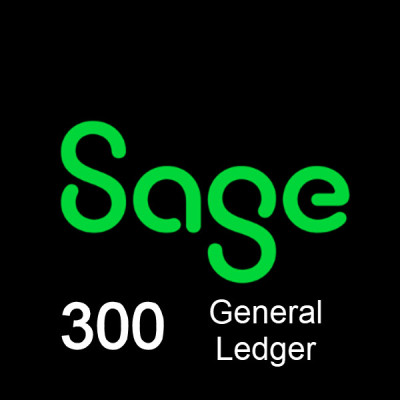
Beginner
Sage 300 - General Ledger
(0)
(0 Reviews)

00:00:00 Hours
22 Lectures
Last updated Mon, 06-Feb-2023
22 Lessons
00:00:00 Hours
English
This course is based on a combination of theory and practical hand-on training.
Theory + Practical Application Scenarios + Hands-On Training = Outstanding Results
Total Corporate Learning’s Sage 300 General Ledger offers a comprehensive curriculum of results-oriented training that empower attendees to apply tools and techniques learned in this session, to meet the challenges they face every day. This course combines a solid theoretical foundation with numerous practical examples and, extensive hands-on training exercises that have been designed to put the theory into practice. There are over fifty hands on exercises.
- Lesson one will provide you with an understanding of the setup of the General Ledger and how it relates to performance. You will learn how to change settings to suit your specific accounting requirements, and how to make the most of some optional setup features to ease your data entry load.
- In lesson two, you will learn about the many reports and report options relating to the setup of the General Ledger. You will learn how to use the report criteria to access the information needed, and how these reports will help to manage the General Ledger module.
- In lesson three, you will learn how to create accounts, display account balances, maintain budget information, view source-currency information, display transaction history and fiscal set comparisons, and set account permissions.
- In lesson four, you will learn to print the Chart of Accounts and the Trial Balance reports of the General Ledger. You will learn how to use the report criteria to access the information needed, and how these reports will help to manage the General Ledger module.
- This lesson five will teach you about Sage 300 batch system and how to enter general journal entries with ease and accuracy. Emphasis is placed on routine journal entries and transaction flow. Procedures will also be discussed on how to import transaction batches from other systems.
- In this lesson six, you will learn to print the various transaction reports of the General Ledger. You will learn how to use the report criteria to access the information needed, and how these reports will help to manage the General Ledger module.
- In lesson seven we will introduce the periodic processing functions of General Ledger. They will learn how to retrieve transactions from other Sage 300 modules as well as generate transactions internally from recurring batches and reallocation accounts. This lesson will also cover clearing accounting history and performing year end processing.
KSh30000KSh25000

Beginner
Disaster Risk Management Course
(0)
(0 Reviews)

00:00:00 Hours
34 Lectures
Last updated Fri, 27-Jan-2023
34 Lessons
00:00:00 Hours
English
Disaster Risk Reduction (DRR) is the concept and practice of reducing disaster risks through systematic efforts to analyze and reduce the causal factors of disasters. Reducing exposure to haz
- The concepts and theoretical underpinnings of disaster risk reduction and disaster risk management practices.
- Warnings, reduced vulnerability or the prevention of disasters during the next iteration of the cycle. and plans that either modify the causes of disasters or mitigate their effects on people, property, and infrastructure.
KSh45000
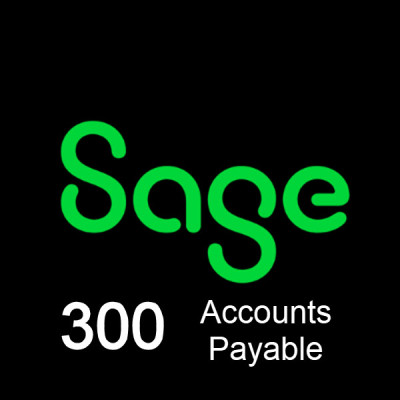
Intermediate
Sage 300 – Accounts Payable
(0)
(0 Reviews)

00:00:00 Hours
12 Lectures
Last updated Fri, 03-Feb-2023
12 Lessons
00:00:00 Hours
English
Sage 300 has more features, functions and enhancements than ever. This one-day course is designed for people who want to get up and running quickly with Sage 300 – Accounts Payable. If you are new or want to enhance your knowledge of Sage 300 – Accounts Payable and want to set up and create new companies in Sage 300, then this is the ideal course to begin your learning journey!.
This course is based on a combination of theory and practical hands-on training.
Theory + Practical Application Scenarios + Hands-On Training = Outstanding Results
- Setting up Accounts Payable This session will provide you with a quick review understanding of the setup of Accounts Payable and how it relates to performance. You will learn how to change settings to suit your specific accounting requirements, and how to make the most of some optional setup features to ease your data entry load.
- Printing all the Set-up Reports In this session, you will learn about the many reports and report options relating to the setup of Accounts Payable. You will learn how to use the report criteria to access the information that you need, and how the reports will help you to manage your setup and maintenance process.
- Managing Vendor Information In this session you will learn how to maintain vendor records. Including adding, editing, and deleting vendor groups and vendor records. You will be able to create alternative remit‐to locations remit‐to addresses for payments if it is different from the address in the vendor record.
- Printing Vendor Reports In this session learn how to print lists of the vendor groups, vendors, remit-to locations, and recurring charges in your Accounts Payable system. You will learn how to use the report criteria to access the information that you need, and how the reports will help you to manage your vendors more accurately.
- Accounts Payable Transactions In this session you will learn how to enter vendor invoices, credit notes, and debit notes using the Invoice Entry form. You will learn about entering, posting, and reporting payments for vendors, manually or through create payment batch, and also adjust documents in vendor accounts.
- Accounts Payable Transactions Reports Learn to print reports in the A/P Transactions Reports folder to maintain your audit trail and to analyze Accounts Payable data.
- Periodic Processing In this session you will learn how to use the processes located in the Periodic Processing folder to complete the various processing and reporting tasks you perform periodically or at regular intervals in your Accounts Payable system.
KSh45000KSh40000
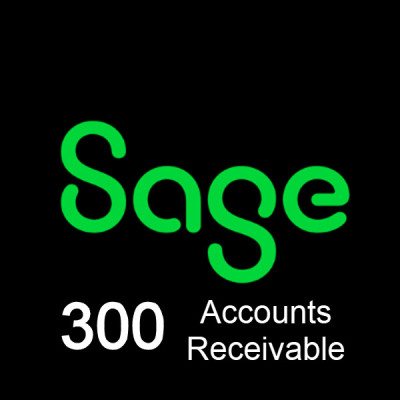
Intermediate
Sage 300 – Accounts Receivable
(0)
(0 Reviews)

00:00:00 Hours
46 Lectures
Last updated Fri, 03-Feb-2023
46 Lessons
00:00:00 Hours
English
This course is intended for anyone wanting to learn the basic features and to develop a working knowledge of the typical day-to-day procedures required to effectively use Sage 300- Accounts Receivable. This training is recommended for anyone who plans to implement, use, maintain, Sage 300 Accounts Receivable. The class is targeted toward data entry clerks, administrators, office managers, who need to understand the technical aspects of receivables and gain foundational knowledge of the application functionality.
This course is based on a combination of theory and practical hands-on training.
Theory + Practical Application Scenarios + Hands-On Training = Outstanding Results
- Setting up Accounts Receivable This session will provide the attendee with a quick review understanding of the setup of Accounts Receivable and how it relates to performance. You will learn how to change settings to suit your specific accounting requirements, and how to make the most of some optional setup features to ease your data entry load.
- Printing all the Set-up Reports In this session, you will learn about the many reports and report options relating to the setup of Accounts Receivable. You will learn how to use the report criteria to access the information needed, and how these reports will help to manage the Accounts Receivable module.
- Managing Customers Information In this session you will learn how to maintain customer records. Including adding, editing, and deleting customer groups, national accounts, and customer records. You will be able to create alternative ship‐to locations for your customers, such as warehouses or other shipping locations.
- Printing Customer Reports In this session learn how to print lists of the customer groups, national accounts, customers, ship-to locations, and recurring charges in your Accounts Receivable system. You can also print statistics reports for customer groups, national accounts, and customers.
- Accounts Receivable Transactions In this session you will learn how to enter customer invoices, credit notes, and debit notes using the Invoice Entry form. This session will teach you about entering, posting, and reporting receipts from customers, refunds to customer, and adjustments to documents in customer accounts.
- Accounts Receivable Transactions Reports Learn to print reports in the A/R Transactions Reports folder to maintain your audit trail and to analyze Accounts Receivable data.
- Periodic Processing In this session you will learn how to use the processes located in the Periodic Processing folder to complete the various processing and reporting tasks you perform periodically or at regular intervals in your Accounts Receivable system.
KSh35000KSh30000

Beginner
A Complete 2024 Web Development Full Course
(0)
(0 Reviews)

247:10:59 Hours
406 Lectures
Last updated Wed, 22-May-2024
406 Lessons
247:10:59 Hours
English
Become a Full-Stack Web Developer with just ONE course. HTML, CSS, Javascript, Node, React, MongoDB, Web3 and DApps
- After the course you will be able to build ANY website you want.
- Master backend development with Node
- Work as a freelance web developer.
- Master frontend development with React
- You will learn the latest technologies, including Javascript, React, Node and even Web3 development.
- You will master both front and back-end development, becoming a full-stack developer by the end of the course.
KSh30000KSh25000

Beginner
The Ultimate Photography Masterclass: Beginner to Advanced
(0)
(0 Reviews)

00:00:00 Hours
137 Lectures
Last updated Mon, 30-Jan-2023
137 Lessons
00:00:00 Hours
English
A complete guide to everything you need to know about photography and how to take photos like a Pro. Our Photography training prepares you for the creative, conceptual, and technical demands of a career as a photographer or multimedia practitioner.
- You will know how to photograph in different scenarios like family portraits, landscapes, aerial, product, wildlife, and much more
- You will know how to light your subjects with flash and natural lighting
- You will know how to take amazing photos that impress your family and friends
- You will know how to compose images beautifully with basic photography rules
- You will know how to make money with photography
- You will know how the camera truly works, so you can take better photos using manual settings
- You will know how to take better photos with your smart phones
- You will know how to edit your photos like a professional
KSh25000

Beginner
Digital Marketing Training Masterclass Mix Package - 2024 updated, monthly intakes, online + physical
(0)
(0 Reviews)

00:00:00 Hours
56 Lectures
Last updated Sun, 16-Jun-2024
56 Lessons
00:00:00 Hours
English
Practical and On-Demand Digital Marketing Training, offering flexibility, and the desire to grow your skills at your comfort. Online lectures, 5 off-shoulder classes, 5 webinars. 15k deposit
- All round digital marketing skills
- Social Media Management Skills
- Email Marketing Skills
- Website Management & Landing Page design skills
- Search Engine Optimization skills
KSh45000KSh40000
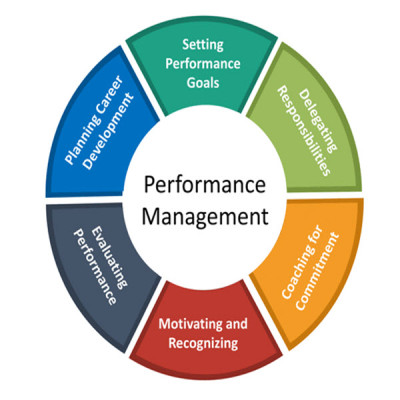
Intermediate
Performance Management
(0)
(0 Reviews)

00:00:00 Hours
46 Lectures
Last updated Wed, 08-Feb-2023
46 Lessons
00:00:00 Hours
English
Recommended for advanced users of Sage 300 People. This course is recommended for all Sage 300 People users who have successfully completed the Basic Part 1 course. The Sage 300 People Payroll Basic Part 2 training ensures the optimal use of the Sage 300 People system by focusing on structures to comprehend and fully sustain an effective payroll system.
- At the end of the course you will have knowledge and skills to perform performance management functions in the Sage 300 People
Free

Beginner
Making Money Online Through Gigs, as A Consultant, Staff etc - Oracom Group
(5)
(1 Reviews)

03:59:09 Hours
35 Lectures
Last updated Mon, 01-May-2023
35 Lessons
03:59:09 Hours
English
This is a FREE course that gives you all the resources you need to start making Money online. In this course we discuss all the sttrategies, give all the resources and materials to get you started quickly. The end game is that you make some money online.
- Earning Through Gigs
- Self Employment
- Digital Marketing Consultant
KSh25000

Beginner
Business Data Analytics
(0)
(0 Reviews)

00:00:00 Hours
0 Lectures
Last updated Fri, 07-Jul-2023
0 Lessons
00:00:00 Hours
English
This course focuses on teaching students the skills and techniques required to analyze and interpret large sets of data in a business context. The course typically covers a range of topics related to data analysis, including statistical analysis, data mining, data visualization, predictive modeling, and data-driven decision-making. Some of the tools, software/ languages that you will interact with during this course are: Excel, SQL, Tableau, Google Data Studio, Python
- Learn and work with data analysis and management tools that are used widely Study each of the major fields of data analytics in an organised and logical manner Increase your demand as a professional with experience in data analytics because most organisations are now looking for ways to exploit the power of big data.

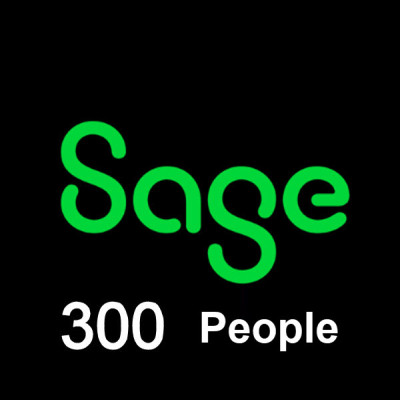

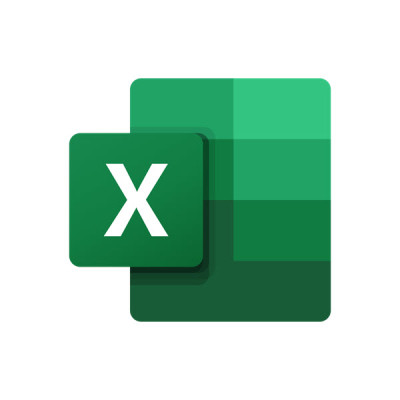

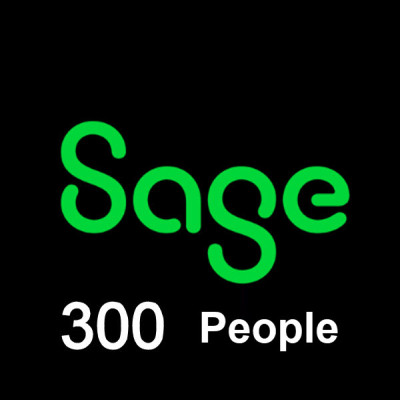
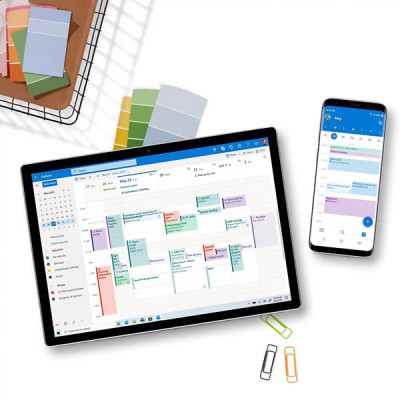
Write a public review